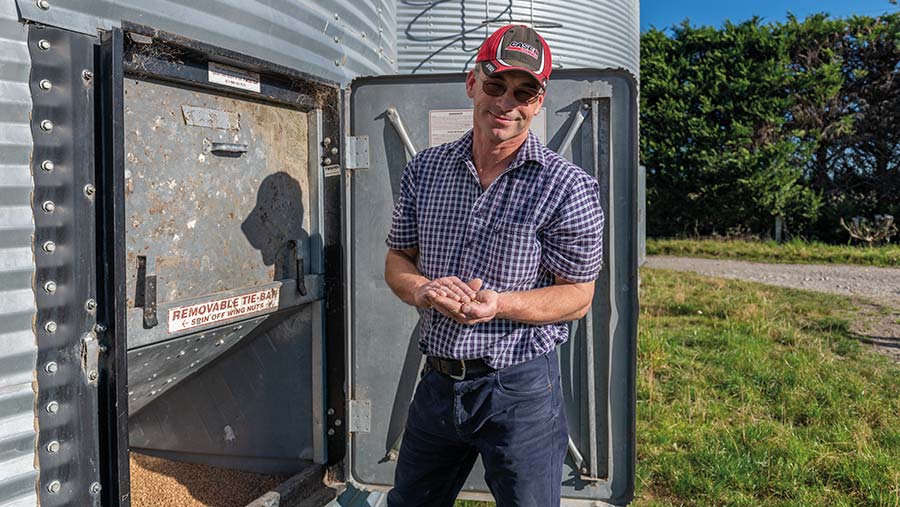Farmer Focus: Wary of a painful wheat market correction
 © Emmily Harmer
© Emmily Harmer We are well and truly into winter out here, a fair bit of mud underfoot with regular, but not large rain events, heavy frosts in between and snow cover down below the bush-line on the Alps.
Fortunately, we had all the autumn wheat sown in good time and well established except for a wet headland alongside a row of trees in an ex-spud paddock.
The store lambs are doing well on kale crops with good utilisation.
Feed reserves are good here on farm, but generally tight across Canterbury, with particularly low levels of supplementary feed because of the difficult harvest.
See also: Largest UK weed survey reveals Italian ryegrass challenge
We have four loads of straw left to deliver to North Island dairy farms and the shed will be empty, even though we were fortunate to get our normal bale tallies out of the harvest.
This is well ahead of schedule for us and will leave none for sale into the spring market.
The same goes for our feed grain deliveries, with the truck busy delivering to feed millers and direct to dairy farms.
With both sales and deliveries cracking on at a good pace, we should be all done much earlier than normal.
The same is occurring for other farmers and this bodes well for going into the next harvest with empty stores and a ready market.
What is making us all very nervous, and I’m sure it’s the same for you, is the pressure going onto our input costs, it seems every second email is advising of a price rise or supply constriction.
The tension is ensuring that we lock in sale prices that allow for a margin to operate.
A break-even result isn’t sustainable, so the inevitability is that the cost of growing food for the consumer’s plate has increased markedly and will have to be passed on.
The flip side is that we all remember 2008 when everything got all topsy-turvy and then the market fell off a cliff.
Back then I learned how painful it was to be on the wrong side of a market correction – I don’t want to learn that lesson twice.


